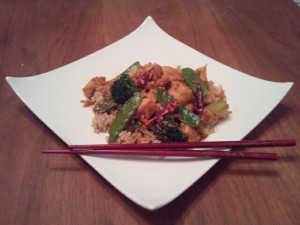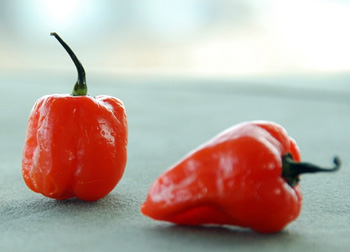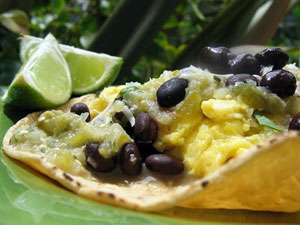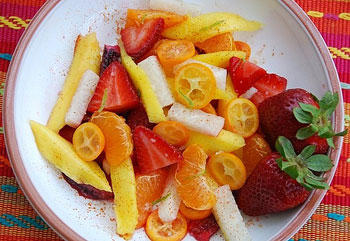 The biggest lesson I learned when stepping up from someone who occasionally cooked for herself to someone who cooks for a living is that the quality of ingredients is at the apex of importance. Actually, I think tasting the difference between food cooked with cheap or old elements, and fresh, high quality ingredients is a skill everyone develops whether they cook or not. This past summer I was walking home from the gym and passed a Mr. Softee truck. I was feeling depleted and entitled from my workout and stopped for a van/choc swirl cone- a prized acquisition in my childhood.
The biggest lesson I learned when stepping up from someone who occasionally cooked for herself to someone who cooks for a living is that the quality of ingredients is at the apex of importance. Actually, I think tasting the difference between food cooked with cheap or old elements, and fresh, high quality ingredients is a skill everyone develops whether they cook or not. This past summer I was walking home from the gym and passed a Mr. Softee truck. I was feeling depleted and entitled from my workout and stopped for a van/choc swirl cone- a prized acquisition in my childhood.
And you know something? It was disgusting. It tasted exactly like cold, wet plastic. And I was shocked- because I had decided that it was the most delicious and incredibly naughty reward I could give myself. I finished it of course but I had this sneaking suspicion that I would have felt happier had I rewarded myself with something that was good for me like one of the peaches from a local fruit stand. There are things that we all loved as a child that our adult palates won’t tolerate.
And that brings me to Chinese food. As I have mentioned before, I grew up in New York City, on a hearty diet of Chinese take-out at least once or twice a week. It’s what you did. And it was fantastic, I swear. But these days… I cannot figure out why I can’t recapture the blissful Chinese delivery food orgy of my childhood. It all tastes like crap to me, like used fry oil and old ingredients and people skimming every last cent of quality into their bank accounts.

 In August 1997, and Jeff and I were at the Raleigh Farmers' Market in North Carolina. A farmer was selling a wide variety of chilies, including habaneros. I was instantly drawn to their shiny, reddish-orange skin and almost heart-like shape.
In August 1997, and Jeff and I were at the Raleigh Farmers' Market in North Carolina. A farmer was selling a wide variety of chilies, including habaneros. I was instantly drawn to their shiny, reddish-orange skin and almost heart-like shape. "It's all Greek to me" were practically the words that came out of my
mouth when I first saw this dish listed on a restaurant menu. I didn't
know what I was getting in to, but ever since that initial sumptuous
taste, I have been in love and obsessed with this classic Greek
casserole. Moussaka at first may appear to be a wintry meal, but late
summer with its abundance of dark purple eggplants or aubergines is
truly the perfect opportunity for making this dish. For me the sight of
an eggplant around this time of year automatically equals moussaka. And
truth be told, I love it so much that I usually end up eating the
entire casserole all by myself.
"It's all Greek to me" were practically the words that came out of my
mouth when I first saw this dish listed on a restaurant menu. I didn't
know what I was getting in to, but ever since that initial sumptuous
taste, I have been in love and obsessed with this classic Greek
casserole. Moussaka at first may appear to be a wintry meal, but late
summer with its abundance of dark purple eggplants or aubergines is
truly the perfect opportunity for making this dish. For me the sight of
an eggplant around this time of year automatically equals moussaka. And
truth be told, I love it so much that I usually end up eating the
entire casserole all by myself. Since I live in Southern California, I really should speak Spanish. It’s not like I don’t know any Spanish. I know a few essential phrases, such as Buenas dias. ¿Cómo esta? Muchas gracias. And ¿Puedo tener huevos rancheros, por favor?
Since I live in Southern California, I really should speak Spanish. It’s not like I don’t know any Spanish. I know a few essential phrases, such as Buenas dias. ¿Cómo esta? Muchas gracias. And ¿Puedo tener huevos rancheros, por favor? If you ever visit a San Diego farmers' markets, then chances are you'll see several people milling around who are holding tall, clear plastic cups filled with deliciously ripe fresh fruit such as mangoes, pineapple, and watermelon that have been doused with lime juice, salt, and chili pepper. They may be eating the fruit with a long toothpick (or just with their hands, if they don't mind sticky fingers).
If you ever visit a San Diego farmers' markets, then chances are you'll see several people milling around who are holding tall, clear plastic cups filled with deliciously ripe fresh fruit such as mangoes, pineapple, and watermelon that have been doused with lime juice, salt, and chili pepper. They may be eating the fruit with a long toothpick (or just with their hands, if they don't mind sticky fingers).